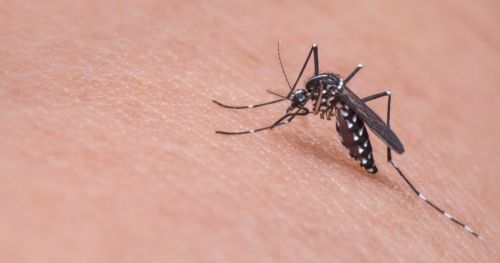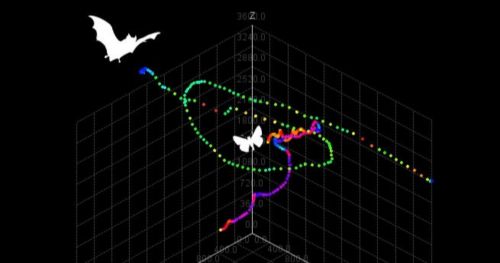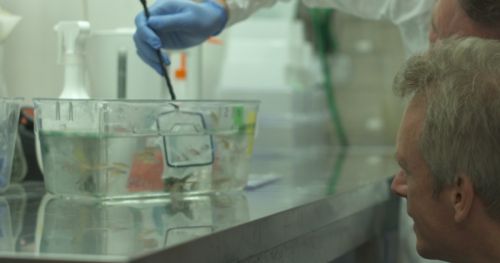Track3D
Resources
References
- Beeuwkes, J., J. Spitzen, C.W. Spoor, J.L. van Leeuwen, and W. Takken (2008). 3-D flight behaviour of the malarial mosquito Anopheles gambiae s.s. inside an odour plume. Proceedings of the Netherlands Entomological Society Meeting, 19, 137–146.
- Lacey E.S., R.T. Cardé (2010). Activation, orientation and landing of female Culex quinquefasciatus in response to carbon dioxide and odour from human feet: 3-D flight analysis in a wind tunnel. Medical and Veterinary Entomology, 25, 94–103. doi: 10.1111/j.1365-2915.2010.00921.x
- Spitzen, J., Spoor, C.W., Kranenbarg, S. et al. (2008). Track 3D: visualization and flight track analysis of Anopheles gambiae s.s mosquitoes. Proceedings of Measuring Behavior 2008 (eds. A.J. Spink, M.R. Ballintijn, N.D. Bogers et al.), 133–135. Wageningen: Noldus Information Technology.
- Spitzen, J., Spoor, C.W., Grieco, F., ter Braak, C., Beeuwkes, J., et al. (2013). A 3D Analysis of Flight Behavior of Anopheles gambiae sensu stricto Malaria Mosquitoes in Response to Human Odor and Heat. PLoS ONE, 8(5), e62995. doi:10.1371/journal.pone.0062995 Find this article online - Watch a sample video on YouTube
- Cachat, J.M. (2013). Developing zebrafish models of complex phenotypes relevant to human brain disorders. PhD Thesis. Tulane University.
- Stewart, A.M., Grieco, F., Tegelenbosch, R.A.J., Kyzar, E.J., Nguyen, M., Kaluyeva, A., Song, C., Noldus, L.P.J.J., Kalueff, A.V. (2015). A novel 3D method of locomotor analysis in adult zebrafish: Implications for automated detection of CNS drug-evoked phenotypes, Journal of Neuroscience Methods, 255(30), 66-74. http://dx.doi.org/10.1016/j.jneumeth.2015.07.023.
- Jensen, H.M., Korbut, R., Kania, P.W., Buchmann, K. (2018). Cannabidiol effects on behaviour and immune gene expression in zebrafish (Danio rerio). PLoS ONE, 13(7), e0200016. doi: 10.1371/journal.pone.0200016.r
- Hinze, A., Lantz, J., Hill, S. R., & Ignell, R. (2021). Mosquito host seeking in 3D using a versatile climate-controlled wind tunnel system. Frontiers in behavioral neuroscience, 15, 643693.
- Ilie, O. D., Duta, R., Jijie, R., Nita, I. B., Nicoara, M., Faggio, C., Dobrin, R., Mavroudis, I., Ciobica, A., & Doroftei, B. (2022). Assessing Anti-Social and Aggressive Behavior in a Zebrafish (Danio rerio) Model of Parkinson’s Disease Chronically Exposed to Rotenone. Brain Sciences, 12(7), 898.
- Mozūraitis, R., Hajkazemian, M., Zawada, J. W., Szymczak, J., Pålsson, K., Sekar, V., Biryukova, I., Friedländer, M. R., Koekemoer, L. L., Baird, J. K., Borg-Karlson, A,. & Emami, S. N. (2020). Male swarming aggregation pheromones increase female attraction and mating success among multiple African malaria vector mosquito species. Nature Ecology & Evolution, 4(10), 1395-1401.
- Jijie, R., Solcan, G., Nicoara, M., Micu, D., & Strungaru, S. A. (2020). Antagonistic effects in zebrafish (Danio rerio) behavior and oxidative stress induced by toxic metals and deltamethrin acute exposure. Science of the Total Environment, 698, 134299.
Conference presentations
- Kalueff A.V., E. Kyzar, S. Gaikwad, J. Green, A. Roth, C. Collins, M. El-Ounsi, A. Davis, A.M Stewart, J. Cachat, F. Grieco, R. Tegelenbosch, L. Noldus (2012). Developing innovative zebrafish models for drug abuse research. Abstract BBC Addiction Neurobiology Conference, UTHSC SA, San Antonio, USA, March 2-4, 2012.
- Stewart, A.M., F. Grieco, R.A.J. Tegelenbosch, A. Kaluyeva, L.P.J.J. Noldus and A.V. Kalueff (2015). A novel 3D method of locomotor analysis in adult zebrafish: implications for automated detection of CNS drug-evoked phenotypes. Poster presented at the 6th ISBS Regional Conference, Kobe, Japan, July 26-27, 2015).
Recent blog posts

Smelly feet and heat – how malaria mosquitoes find their hosts
It seems that mosquitoes use human body odor to locate suitable hosts, and different people smell differently to mosquitoes.
The bat - moth aerial battle in 3D
Moths arrived first on the evolutionary stage; when much later on bats appeared with their sophisticated apparatus for echolocating prey, moths were forced to change or die.
 English
English German
German French
French Italian
Italian Spanish
Spanish Chinese
Chinese